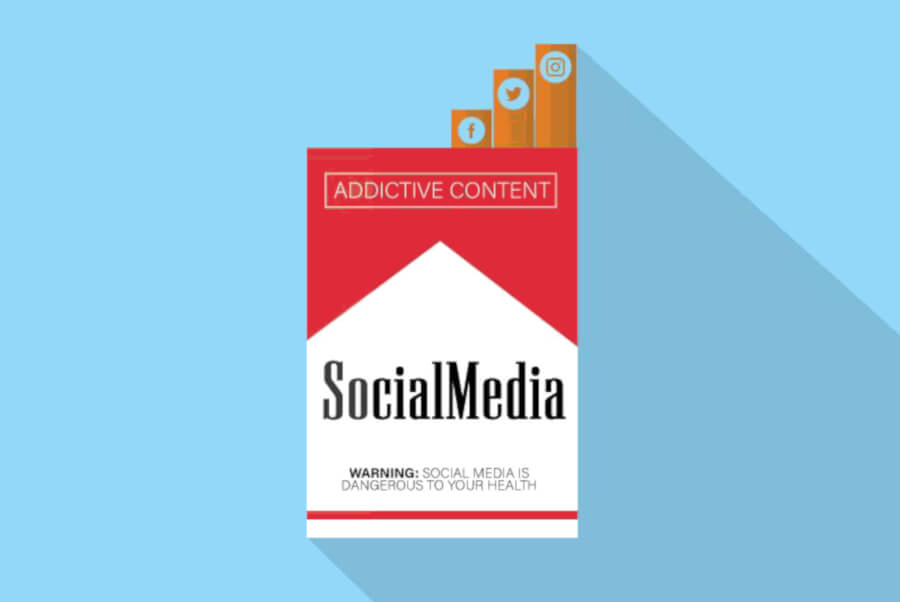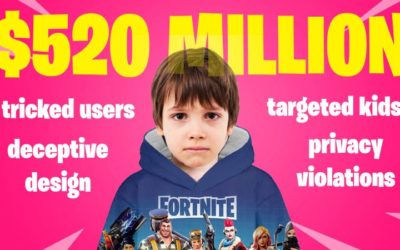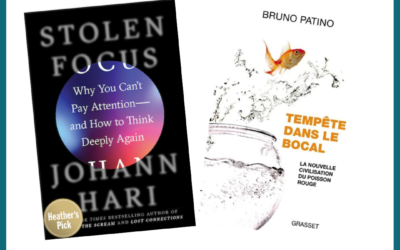Running a TikTok & Instagram challenge for teens for Tech for Good Canada has made me ever more aware of the “Weapons of Mass Distraction” they are, making them truly bad for youth health, mental and physical. The catch is underrepresented populations & creators love them, as its a “free” mode of expression they lack. This is nevertheless a societal division machine like no other that kids must be protected from.
Other responsible adults, especially in government, have had no time to dive into the addictive and dark design implemented by the makers of TikTok, Instagram and Snapchat, but when you do, as I have, with team members at Ontario Tech’s Steam 3D Maker Lab for the We Stop Scrolling challenge, your jaw drops.

Unlike cigarettes in the 50s, not only is the design addictive but it is targeted at kids this time, from as young as possible, to 17, making it harder to detect for those elected officials mandated to protect citizens, in Canada as elsewhere.
TikTok’s Dark Design Offers Kids Digital Cigarettes That Cost Their Mental Health
TikTok, the new kid on the poorly named “social media” block (launched worldwide in 2018 by ByteDance in China) , is among the most perfected asocial addiction machine. Its excellent algorithm feeds the user what it determines she/he/they will like. Its not even a question of subscribing to content, as with Instagram. Much like the ” auto play ” feature on YouTube, TikTok decides what content is best for its profits (and societal havoc?), based on the premise the longer a user spends on the app, the more it can charge for advertising.
Watch Jack Gordon, a young YouTube Star explain TikTok’s Draw :
The other reason is the user will become more and more of a zombie (truly, imagine being 7, 11 or 13 and watching 30 second videos for more than 30 minutes a day and staying focused). This “TikTok youth zombie” can often be fed content from influencers focusing on niches, from beauty to, alas, vaccination and mental health issues. When these influencers do ” Live ” broadcasts, they encourage viewers to contribute money to them, disguised as “gifts” to make them look cute. So TikTok the free cigarette dealer even charges, through a ( generally young) accomplice. Very devious.
When I hear US senators ask TikTok executives questions in recent hearings, even if they’ve been briefed on the problems posed, its obvious they have not used the app themselves, unfortunately and are at a loss to really drill into these companies’ actions. Only when one has extensively studied the app can one understand the precise attack on already fragile youth mental health that has designed.
We did a quick TikTok to feature some excerpts from the October 21 US Senate Hearings of Big Tech executives on child mental health.
Oh, but isn’t TikTok so creative and fun? For 10% of Users,Yes
Yes, it is! Its an incredible short video creation tool for the 10 % of users that have that creative vibe and time on their hands to produce quality, attractive content. We’re featuring those talented creative activist that advocate for causes ourselves in the We Stop Scrolling research project. For the other 90%, TikTok is a Zombie machine.
Snapchat and Instagram Use Similar Youth Addiction Techniques
An app that was in its heyday 10 years back and is trying to keep a low profile today, Snapchat, also uses dark design patterns to lure kids in.
Here’s one example, among many. When I try to enter a birth year that would put me in the under 13 years old category ( the limit those companies must abide to per the US COPPA law), the design scrolls back to a date that makes me 13. You have to try it to believe it!
As for Instagram, the task for Tech for Good Canada is easier these days. Advocates for Tech designed with ethics and societal good in mind received welcome help recently from Facebook whistle blower Frances Haugen, when she revealed in ” the Facebook files” how Facebook knew of Instagram’s detrimental impact on teenage girls mental health.
This is just the tip of the iceberg however. Let responsible adults not focus all eyes on Facebook and forget about other social media companies like ByteDance and Snap, that have the same attitude towards child addiction.
We call on responsible health officials, as a short term emergency measure, to add warning labels in the app stores and on the phones sold to teens by Rogers, Bell, Fido, and others for TikTok, Snapchat, and Instagram saying: ” This app is bad for your mental health, self-love and future prospects“.







